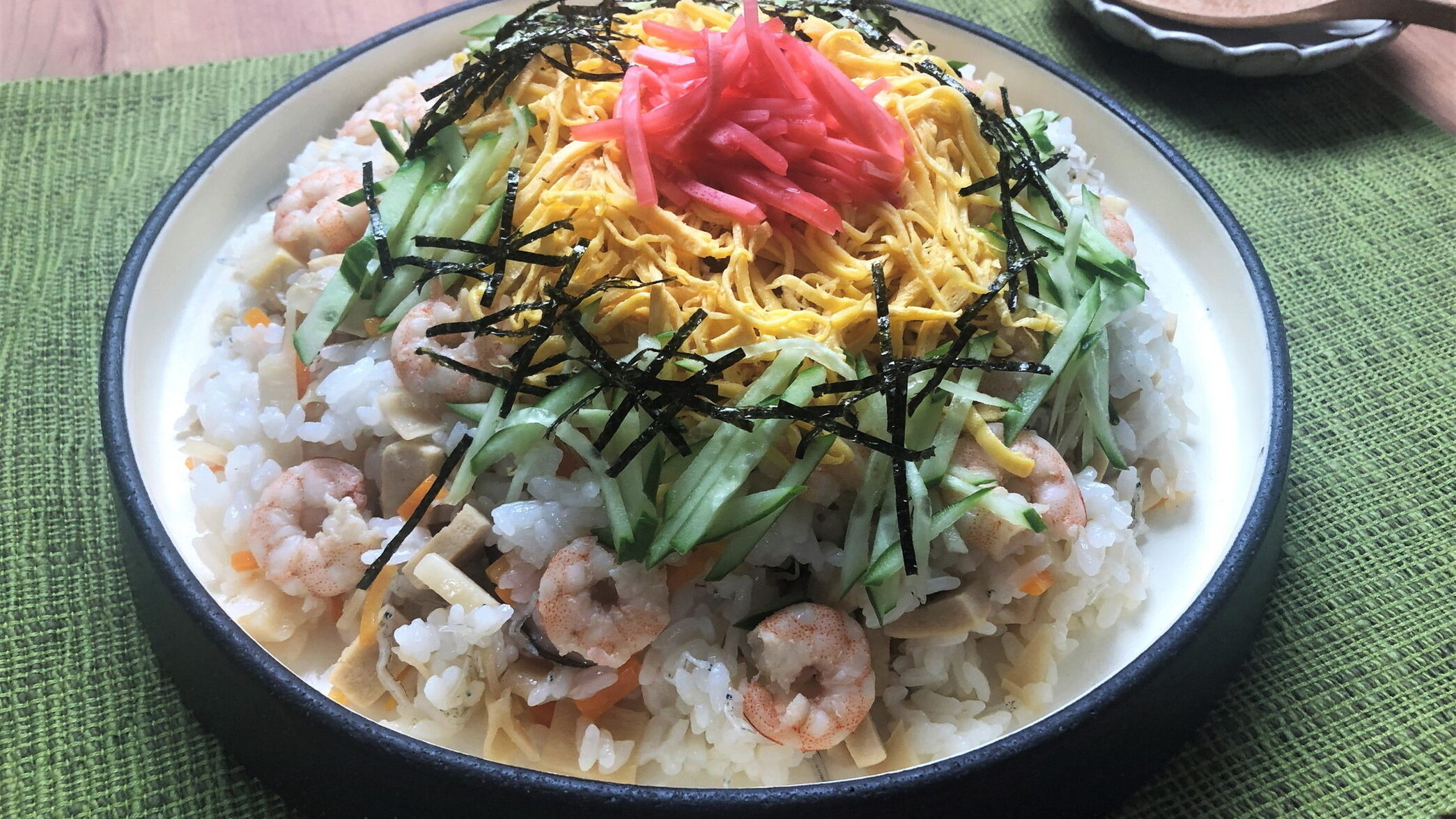
Get ready for a vibrant and flavorful dish from Osaka! It’s called “Barazushi,” and it’s a delightful mix of sushi rice and finely chopped ingredients. Think of it as a Kansai-style take on scattered sushi, but instead of arranging the toppings neatly, everything gets mixed right into the rice. It’s a fantastic way to use a variety of vegetables, dried goods, and even some seafood, creating a dish that’s both satisfying and visually appealing. Plus, in Osaka, they have a clever way to enjoy any leftovers – by steaming it the next day for a warm and comforting “steamed sushi”! It’s a testament to their resourceful culinary spirit.
Dish Name: Barazushi
- Region / Location: Osaka Prefecture
- Primary Area of Tradition: Entire prefecture
- Main Ingredients: Rice, dried young sardines (chirimen jako), lotus root, carrot, freeze-dried tofu (koya dofu), dried shiitake mushrooms, burdock root, snow peas, egg
How It’s Eaten / Served
First, seasoned sushi rice is prepared. Then, cooked and finely chopped vegetables (like lotus root, carrots, and burdock root), rehydrated and chopped koya dofu and shiitake mushrooms are mixed into the rice. It’s then served in a bowl or on a plate, often garnished with thin strips of cooked egg (kinshi tamago) and pickled ginger (beni shoga or su shoga). You can also find variations that include pickled lotus root or add ingredients like fish sausage (chikuwa) or fried tofu (aburaage).
Cultural Background and Preservation
Barazushi is a popular dish in Osaka, often prepared for celebratory occasions and festivals, but it’s enjoyed year-round as a tasty and easy meal. One theory suggests its origin lies in Okayama Prefecture, where, during the Edo period, commoners supposedly mixed various ingredients with rice as a form of protest against a lord’s decree to limit meals to “one soup and one dish.” While the Kanto region often features “chirashizushi” with sashimi arranged over sushi rice, the Kansai region, including Osaka, predominantly features this mixed-in style known as “barazushi.” Recipes vary from household to household, and fresh raw fish is not a necessary component. Its ease of preparation and colorful presentation make it a favorite among people of all ages. A unique aspect of Osaka’s food culture is the practice of steaming leftover barazushi the next day, transforming it into a warm and delicious “steamed sushi” (mushizushi or atsuzushi), showcasing a resourceful approach to food. Beyond homes, barazushi is also a staple in sushi restaurants and other eateries throughout Osaka, with chefs offering their own unique twists on ingredients, presentation, and flavor.
Additional information:
- Kansai (関西): A region in the west-central part of Japan that includes major cities like Osaka, Kyoto, and Kobe. It has its own distinct culture and culinary traditions.
- Chirashizushi (ちらし寿司): A type of sushi where the ingredients (like raw fish, vegetables, and eggs) are scattered over a bed of sushi rice.
- Kinshi Tamago (錦糸卵): Thinly shredded omelet, used as a colorful garnish in many Japanese dishes.
- Beni Shoga (紅生姜) / Su Shoga (酢生姜): Pickled ginger, often served with sushi as a palate cleanser. Beni shoga is typically bright red, while su shoga can be thinly sliced and pale yellow.
- Aburaage (油揚げ): Thin sheets of tofu that have been deep-fried. They are often used in soups, stews, and other dishes.
The information about regional cuisine featured on this website (Piggy's Grandma of Japan) is summarized and adapted from the Ministry of Agriculture, Forestry and Fisheries of Japan (MAFF) website, "Our Regional Cuisines"Additional commentary is provided based on the unique experiences and perspectives of the site's editors.
The copyright for the original content regarding regional cuisine belongs to the Ministry of Agriculture, Forestry and Fisheries of Japan.
The summaries and adaptations published on this site are intended for informational purposes only. Piggy's Grandma of Japan does not guarantee the accuracy or completeness of this information. For the most accurate and complete details, please refer to the original pages on the MAFF website.

